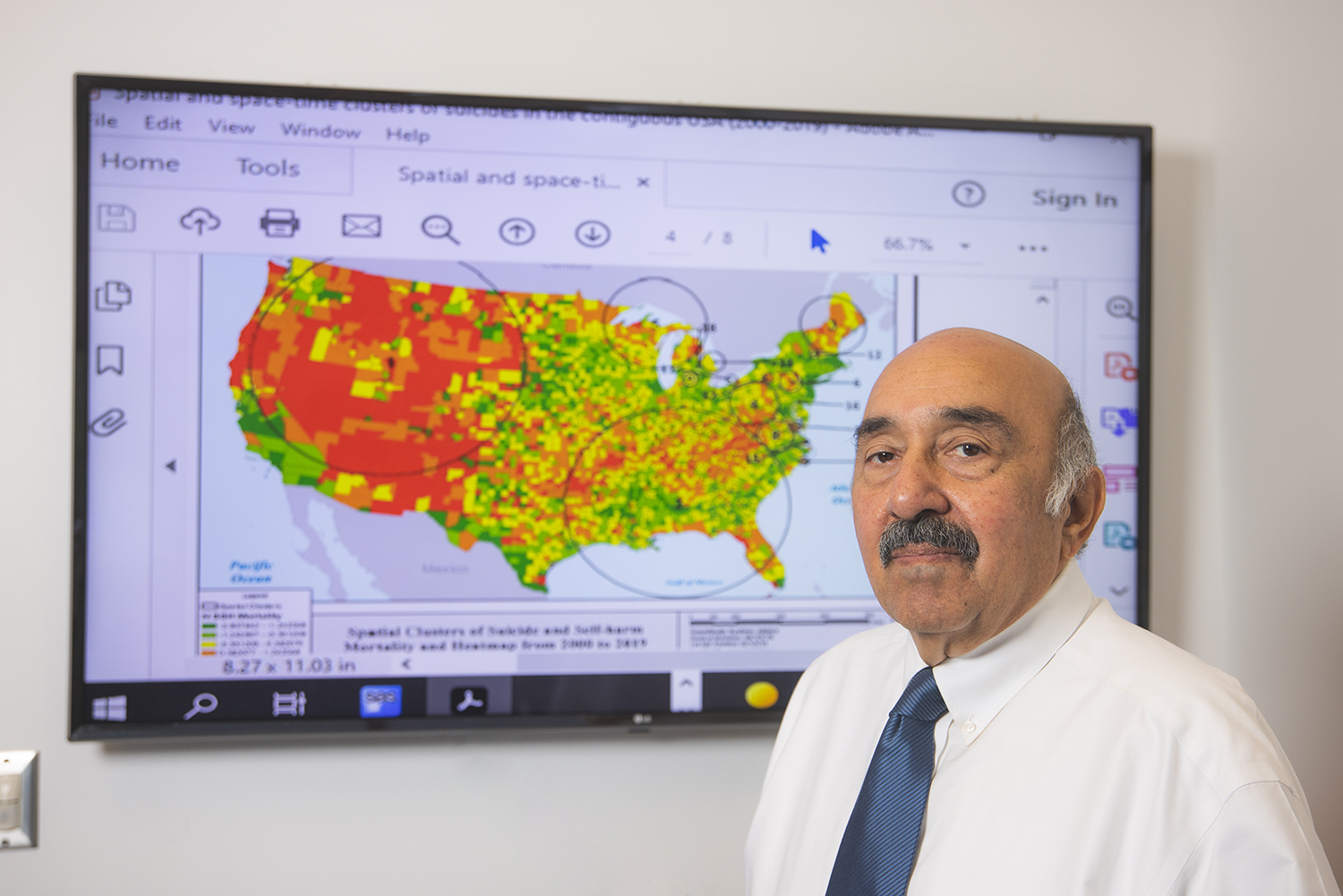An analysis by a University of West Florida team identified areas in the contiguous United States where suicide and opioid death rates are high and where the deaths overlap. The observations have the opportunity to assist health agencies in these areas in identifying conditions that may be driving an unusually high rate of suicides and/or opioid deaths.
Dr. Raid Amin, a distinguished University professor in the Department of Mathematics and Statistics, Dr. Rodney Guttmann, professor in the Department of Biology, and former UWF graduate students Misty Uher, Matthew Holley and Bradly Rivera-Muniz studied suicide deaths and associations with several factors, including opioids deaths. Their research examined deaths in years 2000-2019. Out of nine significant clusters, six were bivariate (suicide and opioids) while three were only opioids.
The maps showed that suicide rates in the Panhandle may be “high,” but not as high as what is seen in most of the western part of the U.S. The research showed that clusters of counties with very high opioid mortality rates are also clusters of counties with very high rates of suicide and are associated with each other.
“These results have the potential to provide a scientific framework that is based on surveillance, allowing health agencies to intervene and reduce elevated rates of suicides in selected counties in the U.S.,” Amin said. “The study is limited due to the resolution of the data at the county level, and some covariate data was unavailable for the entire period of the study.”
The team used SaTScan and ArcGIS, a software used to analyze geographic information by visualizing geographical statistics and creating cluster maps and heatmaps. Their article was published in The Annals of Epidemiology.
For more information on the UWF Hal Marcus College of Science and Engineering, visit uwf.edu/hmcse.

Original source can be found here.

 Alerts Sign-up
Alerts Sign-up